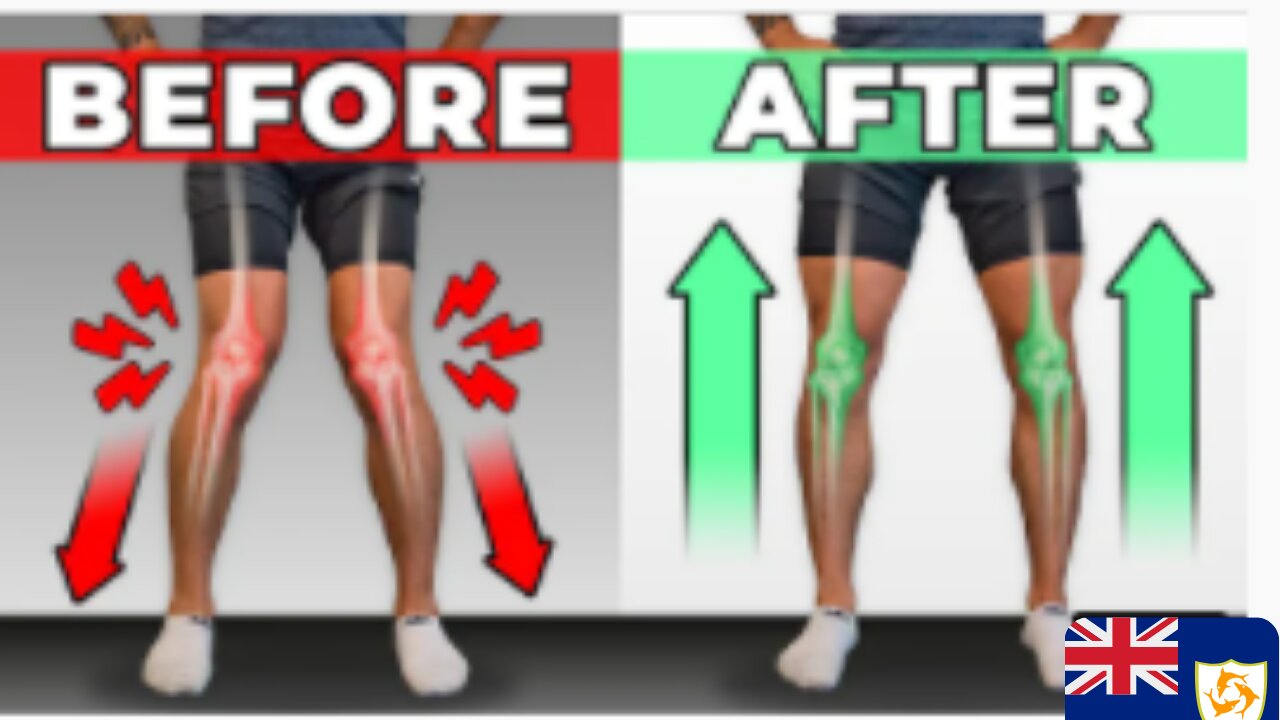Premium Only Content

How To Unf*ck Your Knees In 10 Minutes | Corrective Routine
Struggling with weak knees? I’m going to show you how to fix knee pain and protect your knees for good with a 10-minute corrective routine packed full of knee strengthening exercises. We’ll go through a few tests to figure out what causes your knee pain and/or soreness, use those results to determine the appropriate knee mobility and stability exercises for your body, and combine this all into a 10-minute routine with instructions on how and when to implement it.
Let’s do some ankle and hip tests to reveal the cause of your knee pain. The first test is for ankle stiffness. Take your shoes off, find a wall, and kneel in front of it. Make a thumb and fist with your hand. That’s the distance you want between your big toe and the wall. From here, push your knee forward to try to touch your wall with your knee. Repeat this on both sides. To pass (all 4 are required for a pass):
1) Knee touches wall
2) Knee and hips don’t rotate in/out
3) Heel stays on ground
4) Both sides are within one inch of each other
The hip test we’ll be doing looks at internal rotation. Lie on your back with your knees up and legs bent at 90 degrees. While keeping your knees in place, kick out your feet to the sides as far as they can go. Take a look and note down if both sides are even or if one side is tighter and can’t get the foot out as far as the other side. Once you complete these 2 tests, note down your results. They’re key to knowing which knee strengthening exercises you need to do.
First, we’ll use your test results to determine what knee mobility exercises you should focus on. So, if you failed the ankle test, add the combat stretch to your routine. Take a half kneeling lunge position, straighten up your hips, and drive your front knee forward over your toe. As you do so, think about pulling yourself forward by driving your toes up to your shin. Go as far as you can without your heel lifting off. Hold this end position for 5 seconds, then repeat for 5-10 more repetitions. Start with your more restricted side before switching to the other side. If you have a band, put your leg up on a platform and wrap a band on top of your ankle pulling from the back as you perform the stretch.
And if you found an imbalance in the hips internal rotation test, add the following stretch. Sit on your butt with your arms supporting you upright and legs out in a wide stance. Point your toes up to activate muscles that will help avoid aggravating your knee during the stretch. From here, drive your knee towards the floor until you feel a stretch. Hold that for a few seconds, then switch from side to side for about 5-10 reps each. If you have a band available, we can do an even more effective stretch. Wrap the band around a low fixture and loop it around the hip of your more restricted side so it’s pulling you back. Get down on your hands and knees, kick the foot of your banded leg out, and then sit your butt back into your heels. From here, if you can, come down to your forearms. Rock back and forth for about 5-10 reps and gradually kick your leg further out for a deeper stretch. Repeat on the other side.
Now your body is ready for the stability exercises. The first move – hip airplanes – will help further open up your hips but now while strengthening your weak glute muscles. The next move, the Eccentric Goblet Squat, also works on your glutes, but by focusing on the downward part of the movement, will prevent weak knees and improve your knee health as well. The last exercise is called an isometric, where the body doesn’t move but the muscles around the knees are contracting. It will help both provide instant relief to your knee pain or discomfort so that you can train afterwards, and thickens the tendons around your knee to keep them healthy. And it’s none other than the wall squat.
Alright, you now know how to fix your knee pain! To implement this 10-minute routine for the best results, perform it consistently 2-3 times a week. You can even use it as a warm up routine right before your lower body workouts. Although eventually the mobility exercises may not be necessary once your imbalances are fixed, the stability exercises are great moves to permanently integrate into your routine to prevent knee soreness and protect your knee long term.
-
 5:50
5:50
KTNV
3 years agoWhiten Your Teeth In Minutes
34 -
 1:18
1:18
AfricanNewsAgency
3 years agoHow To Incorporate Kaolin Clay Into Your Skincare Routine
17 -
 4:58
4:58
Unbusy
3 years agoLeaving the house with kids in tow?
46 -
 5:34
5:34
WFTS
3 years agoReset and Renew Your Routine | Morning Blend
22 -
 48:55
48:55
Candace Show Podcast
8 hours agoSTOP EVERYTHING. They FINALLY Mentioned ME In The Blake Lively Lawsuit! | Candace Ep 152
147K127 -
 1:02:51
1:02:51
In The Litter Box w/ Jewels & Catturd
1 day agoWhere are the Epstein Files? | In the Litter Box w/ Jewels & Catturd – Ep. 750 – 2/26/2025
104K87 -
 1:59:06
1:59:06
Revenge of the Cis
9 hours agoLocals Episode 198: Suits
87.7K12 -
 1:38:56
1:38:56
SLS - Street League Skateboarding
1 day agoTop Moments from the Second Half of the 2024 SLS Championship Tour! All The 9’s 🔥
60.7K2 -
 24:22
24:22
Breaking Points
11 hours agoHouse GOP RAMS THROUGH Medicaid Cuts
63.7K39 -
 1:24:15
1:24:15
The Quartering
11 hours agoRep. Swalwell's VIRAL Confrontation, Jeff Bezos Op-Ed Announcement, and Canada's Anti-Musk Campaign
125K36